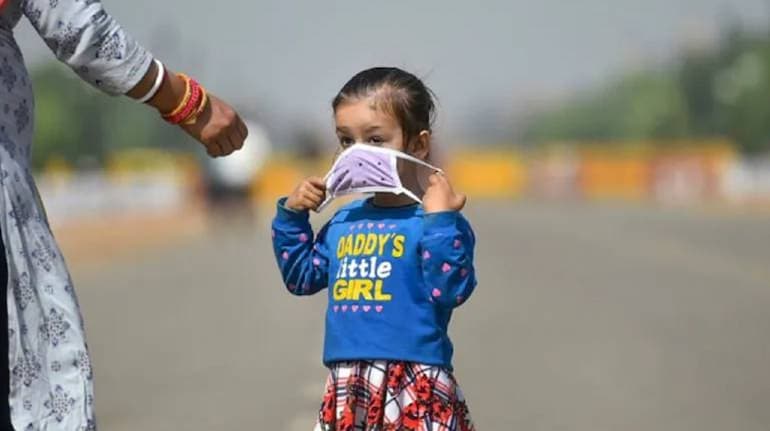For asymptomatic novel coronavirus infection among children, the guidelines recommended no specific medication and promoted COVID-appropriate behaviour. (Representative Image)
The central government has not recommended Remdesivir for children infected with novel coronavirus and suggested rational use of a High-resolution CT (HRCT) scan.
The recent recommendations, by the Directorate general of health services (DGHS), came deal with COVID-19 disease management in children below 18 years of age.
According to the guidelines issued, steroids are harmful in asymptomatic and mild cases of COVID-19 and recommended only in hospitalised moderately severe and critically ill patients under strict supervision.
"Steroids should be used at the right time, in the right dose, and for the right duration. Self-medication of steroids must be avoided," it said.
The guidelines also said Remdesivir (an emergency use authorization drug) is not recommended in children. "There is lack of sufficient safety and efficacy data with respect to Remdesivir in children below 18 years of age," the guidelines said.
Also read | Centre should procure as many vaccines as possible to keep children safe: Manish Sisodia
It further suggested the rational use of HRCT for seeing the extent and nature of lung involvement in patients with COVID-19. "However, any additional information gained from HRCT scan of the chest often has little impact on treatment decisions, which are based almost entirely on clinical severity and physiological impairment. Therefore, treating physicians should be highly selective in ordering HRCT imaging of the chest in COVID-19 patients, " the guidelines said.
For asymptomatic infection among children, the guidelines recommended no specific medication and promoted COVID-appropriate behavior, including wearing of face mask, strict hand hygiene, physical distancing, etc, and suggested giving a nutritious diet.
Also read | Pfizer to test jabs in children below 12 years of age
For mild infection, paracetamol 10-15mg/kg/dose may be given every 4-6 hours for fever and throat soothing agents and warm saline gargles in older children and adolescents have been recommended for cough, as per the guidelines.
In case of moderate infection, the guidelines suggested initiating immediate oxygen therapy. "Corticosteroids are not required in all children with moderate illness; they may be administered in rapidly progressive disease and anticoagulants may also be indicated," the guidelines said.
Follow our LIVE blog for the latest updates of the novel coronavirus pandemic
For severe COVID-19 among children, the guidelines said if Acute Respiratory Distress Syndrome (ARDS) develops, necessary management to be initiated. "In case shock develops, necessary management should be initiated. Antimicrobials to be administered if there is evidence/strong suspicion of superadded bacterial infection. May need organ support in case of organ dysfunction, e.g. renal replacement therapy," it said.
For children above 12 years, the guidelines recommended a six-minute walk test under the supervision of parents/guardians. "It is a simple clinical test to assess cardiopulmonary exercise tolerance and is used to unmask hypoxia. Attach a pulse oximeter to his/her finger and ask the child to walk in the confines of their room for six minutes continuously," it said.
(With inputs from PTI)
Follow our full coverage on COVID-19 here. 

























